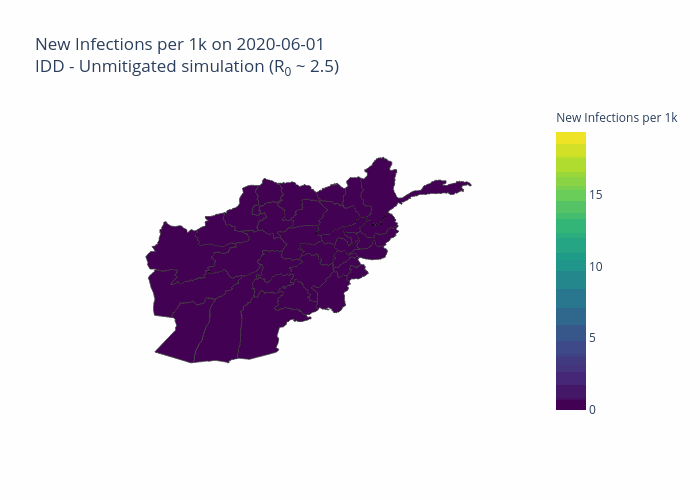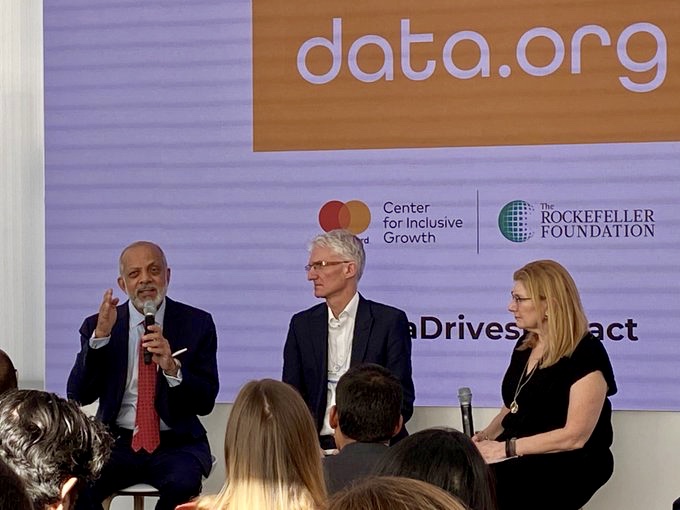Share
The Centre for Humanitarian Data is partnering with The Rockefeller Foundation to increase the use of predictive analytics to drive anticipatory action in humanitarian response. The work will focus on developing new models, providing a peer review process, and closing data gaps.
In late 2019, the Centre created a new workstream for predictive analytics. This was based on demand from OCHA’s leadership to “use data, and especially the tools of predictive analytics to get ahead, to be more anticipatory, to predict what is about to happen and to trigger the response earlier.” This ambition aligns with the overall goal of the Centre, which is to increase the use and impact of data in the humanitarian sector.
The COVID-19 pandemic has brought into stark focus the need for data and the value of models to inform response strategies. We are all learning more about epidemiology than we ever imagined, from the reproduction rate (R0) to flattening the curve. And for good reason: our lives are at stake. Anticipatory action is no longer an abstract idea but something we are doing by staying home and increasing hospital beds in order to protect the most vulnerable among us.
It is for these reasons that our partnership with The Rockefeller Foundation is coming at such a critical time. It will allow us to increase our technical capacity to predict new and compounded risks, and use data and data science to arrive at interventions to mitigate them. Humanitarian needs — already at the highest level in decades at the start of 2020 — are expected to increase significantly as COVID-19 spreads in fragile contexts in the coming months. For instance, WFP has estimated that 265 million people could be pushed to the brink of starvation by year’s end, up from the 135 million people who were already facing acute food shortages before the pandemic.
With these challenges in mind, here is a look at what we plan to achieve together in the next year:
1. Develop new models
We have created a model to estimate the scale, severity and duration of the COVID-19 outbreak in countries with humanitarian operations. The initial model was developed for Afghanistan and has now been extended to other priority countries including the Democratic Republic of the Congo, South Sudan and Sudan. The projections will inform planning of non-pharmaceutical interventions at the sub-national level by governments and other responders.
As the pandemic continues to spread in developing countries, the model will simulate and identify recommended response strategies for the general population, people in need of humanitarian assistance, and refugee populations, as data allows. This work is being undertaken in partnership with the amazing team at the Johns Hopkins University Applied Physics Laboratory.

Prior to the COVID-19 pandemic, OCHA was establishing anticipatory action frameworks in a number of high-risk countries, and this work continues. The frameworks have three elements: a predictive model or forecast; pre-arranged financing; and a pre-agreed action plan. A number of hazards and countries have been selected to pilot an anticipatory approach including flooding in Bangladesh; drought in Chad, Ethiopia, Malawi and Somalia; and cholera in sub-Saharan Africa. The Centre will provide technical support to this process by validating candidate models and developing thresholds and triggers for the release of funds.
2. Provide a peer review process
Although predictive analytics is not a new field, its application in humanitarian response has only just begun. In an effort to increase trust in using models, the Centre has established a Peer Review Framework for Predictive Analytics in Humanitarian Response. The goal is to assess the technical rigor and operational readiness of models and evaluate ethical concerns that the application of models in humanitarian contexts may entail. Note: The Framework was updated in May 2021 and can be found here.
Because of our partnership with The Rockefeller Foundation, we will be able to scale up the number of models that are objectively peer reviewed for operational use. We have successfully tested the process on models developed by the Netherlands Red Cross 510 Global team and the Danish Refugee Council. The next step is to create a pool of ethical and technical reviewers. Our catalogue of predictive models provides an overview of the current state of model development in the humanitarian sector. The Peer Review Framework will enable us to evaluate these models and understand their strengths and weaknesses.
3. Close data gaps
Predictive analytics is an exciting area with the potential to improve how response happens, but models can only work based on good data. Earlier this year, the Centre launched The State of Open Humanitarian Data at an event hosted by data.org. The report showed that only about half of relevant data is available for some of the most long-standing humanitarian crises. The largest data gaps are in the categories for health, education, and food security and nutrition, all of which are essential for predicting disease outbreaks and famine.

Our work to model the impact of COVID-19 on humanitarian operations has been yet another reminder of the data that is missing. For example, we have struggled to find sub-national or gender-disaggregated data on comorbidities such as tuberculosis and HIV/AIDS. We are also working to get access to mobility data but until that becomes available, we have had to use road density data as a proxy for movement patterns. We have created a COVID-19 pandemic page on HDX to bring together the data that partners have been able to share.
We will work with The Rockefeller Foundation and our partners to close data gaps and make data available in ways that are useful for modeling (i.e. up-to-date, sub-national, and in common formats). Sharing model-ready data can save everyone months of time normally spent on data cleaning and processing.
‘Be fast and have no regrets’
The Centre’s work has always been about leveraging partnerships to achieve system-level impact. The partnership with The Rockefeller Foundation is no different, and yet it feels especially important given we are in the midst of a pandemic. At a time when the scale of the challenge demands global cooperation, we are grateful to join with like-minded colleagues to put data at the center of our work in the interest of saving and protecting lives.
As the tools of data science become more powerful and the quality of data improves, there is an opportunity to rethink how we make decisions in the humanitarian sector. But the shift from responding once a crisis has materialized to acting ahead of a possible crisis is a big one, with implications for affected people, governments, and donors alike.
In early March, I listened to a briefing on COVID-19 organized by the World Health Organization (WHO). A journalist asked Dr. Mike Ryan, Executive Director for WHO’s Health Emergencies Programme, what he had learned from responding to previous disease outbreaks. He answered that you have to “be fast and have no regrets”, and “if you need to be right before you move, you will never win.” I wrote this last line down on a post-it note and stuck it on the wall in my kitchen where it still hangs today.
If you are interested in partnering with us on model development or peer review, contact us at centrehumdata@un.org. If your organization has data to share, visit HDX. You can read The Rockefeller Foundation’s announcement about our partnership here.
Do you give training
Hi, please see this new training on visualizing data: https://hdx-centre.preview.strattic.io/learning-BYTES/quick-tips-for-visualising-data